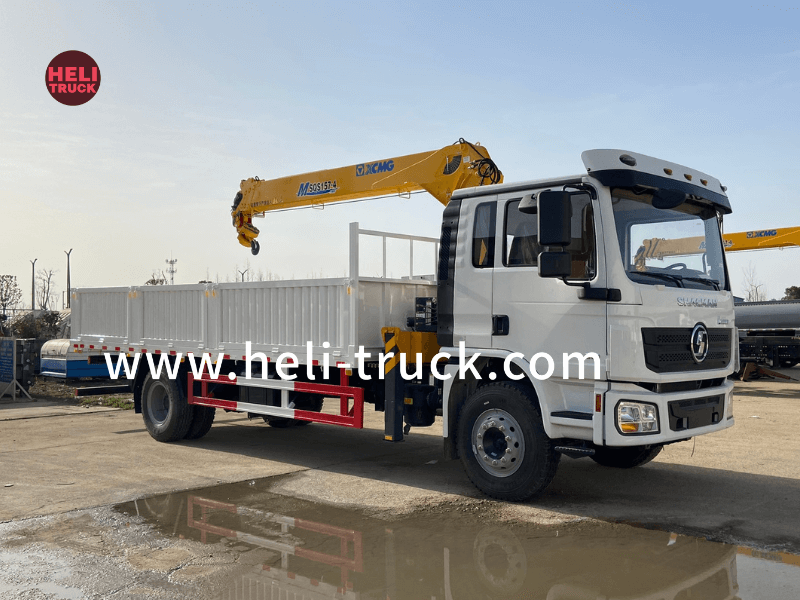Managing Noise Levels of Garbage Compactor Trucks for a Quieter Environment
Introduction Garbage compactor trucks play a vital role in waste management systems, efficiently collecting and compacting trash to be transported to disposal sites. However, the noise generated by these trucks can be a significant concern for residents, workers, and the environment. In this article, we will explore the noise levels produced by garbage compactor trucks, the impact of this noise on individuals and communities, and strategies to manage and mitigate noise pollution for a quieter and more sustainable environment. Understanding Noise Levels of Garbage Compactor Trucks Garbage compactor trucks are equipped with powerful hydraulic systems and compacting mechanisms that generate noise during operation. The noise levels produced by these trucks can vary depending on factors such as the size and type of the truck, the condition of the compaction equipment, and the speed and frequency of operation. Studies have shown that garbage compactor trucks can produce noise levels ranging from 80 to 100 decibels (dB) during normal operation, which is comparable to the noise generated by heavy traffic or a chainsaw. Impact of Garbage Compactor Truck Noise The noise generated by garbage compactor trucks can have a range of negative impacts on individuals and communities. For residents living near waste collection routes, the constant noise of compactor trucks can disrupt sleep, cause stress and annoyance, and even lead to health issues such as hearing loss and cardiovascular problems. Workers who operate or are in close proximity to these trucks are also at risk of experiencing hearing damage and other health issues due to prolonged exposure to high noise levels. Furthermore, the environmental impact of noise pollution from garbage compactor trucks can disrupt wildlife, affect ecosystems, and contribute to overall degradation of the environment. Managing and Mitigating https://www.heli-truck.com  To address the issue of noise pollution from garbage compactor trucks, various strategies can be implemented to manage and mitigate noise levels effectively. One approach is to invest in newer, quieter models of compactor trucks that are designed with noise reduction features such as soundproofing materials, mufflers, and engine enclosures. Regular maintenance and servicing of compaction equipment can also help reduce noise levels by ensuring that the machinery operates smoothly and efficiently. In addition, implementing noise control measures such as acoustic barriers, sound walls, and vegetation buffers along waste collection routes can help minimize the transmission of noise to nearby residential areas and sensitive environments. Adjusting collection schedules to limit noise-generating activities during nighttime or early morning hours can also help reduce the impact of noise on residents' quality of life. Furthermore, providing training and education to compactor truck operators on the importance of noise reduction and proper handling of equipment can contribute to a more sustainable and responsible waste management practices. Conclusion Garbage compactor trucks are essential vehicles in waste management systems, but the noise they generate can have significant impacts on individuals, communities, and the environment. By understanding the noise levels produced by these trucks, recognizing the impact of noise pollution, and implementing effective strategies to manage and mitigate noise, we can work towards creating a quieter and more sustainable environment for all. By investing in quieter technologies, adopting noise control measures, and promoting responsible waste management practices, we can reduce the negative effects of garbage compactor truck noise and create a healthier and more peaceful living environment for everyone.
To address the issue of noise pollution from garbage compactor trucks, various strategies can be implemented to manage and mitigate noise levels effectively. One approach is to invest in newer, quieter models of compactor trucks that are designed with noise reduction features such as soundproofing materials, mufflers, and engine enclosures. Regular maintenance and servicing of compaction equipment can also help reduce noise levels by ensuring that the machinery operates smoothly and efficiently. In addition, implementing noise control measures such as acoustic barriers, sound walls, and vegetation buffers along waste collection routes can help minimize the transmission of noise to nearby residential areas and sensitive environments. Adjusting collection schedules to limit noise-generating activities during nighttime or early morning hours can also help reduce the impact of noise on residents' quality of life. Furthermore, providing training and education to compactor truck operators on the importance of noise reduction and proper handling of equipment can contribute to a more sustainable and responsible waste management practices. Conclusion Garbage compactor trucks are essential vehicles in waste management systems, but the noise they generate can have significant impacts on individuals, communities, and the environment. By understanding the noise levels produced by these trucks, recognizing the impact of noise pollution, and implementing effective strategies to manage and mitigate noise, we can work towards creating a quieter and more sustainable environment for all. By investing in quieter technologies, adopting noise control measures, and promoting responsible waste management practices, we can reduce the negative effects of garbage compactor truck noise and create a healthier and more peaceful living environment for everyone.